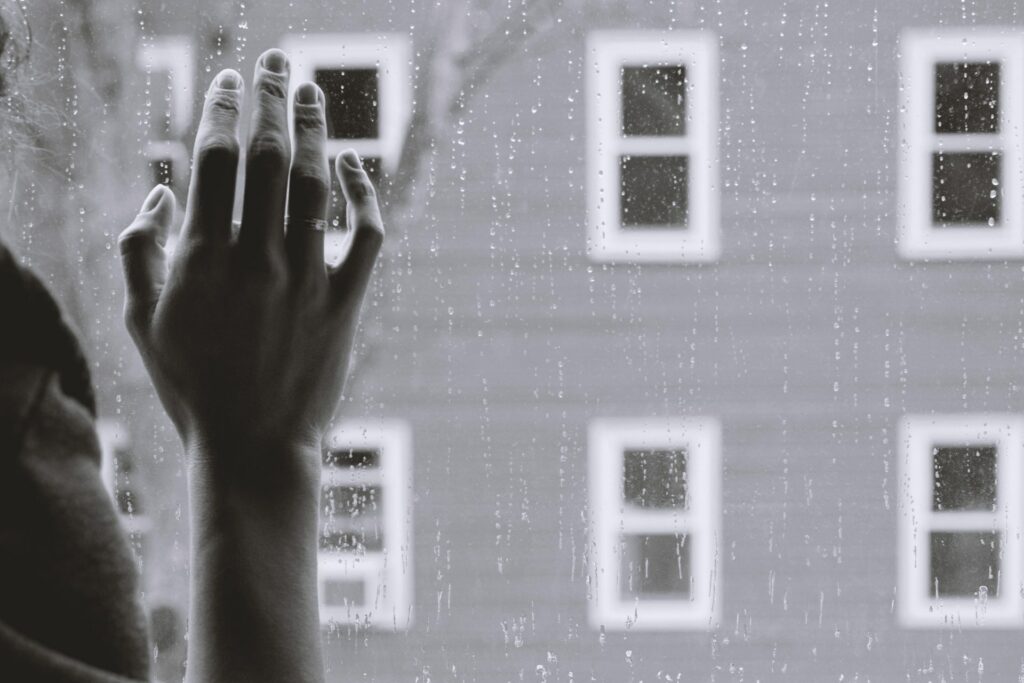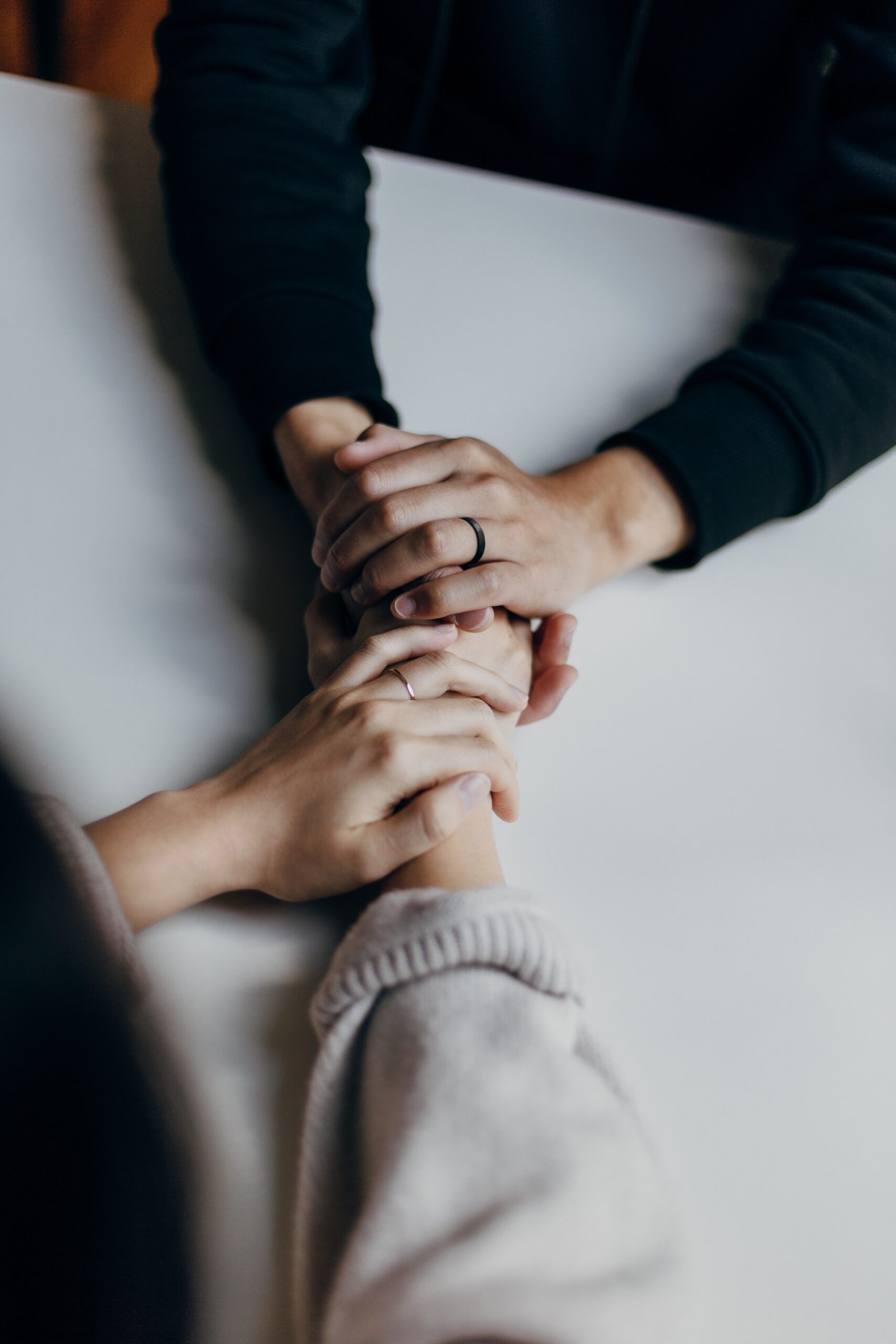How a year of pandemic took a toll on Americans’ mental health

The COVID-19 pandemic began in winter 2020, arriving in waves.
In April 2020, the CDC partnered with the Census Bureau to track the pandemic’s mental health impact.
The Household Pulse Survey researches rates of anxiety and depression among Americans, as well as their treatment and insurance circumstances.
The researchers found the results revealing.
Anxiety rates followed a strikingly similar trajectory as COVID-19.
When they measured depression, they found the same trends.
Depression rates tracked COVID-19 case counts, especially in the winter surge.
The CDC found the pandemic’s effects on mental health to differ by age.
Young people were hit hardest.
The virus’s disproportionate impact on people of color also became apparent.
Not only were people of color and mixed race paying a steeper cost in deaths and economic impact, their mental health was also suffering unequally.
In late summer, the researchers looked at how many Americans were getting treatment.
They found treatment increased, but that even more anxious and depressed people weren’t getting the treatment they needed.
Anxiety and Depression Leaped among Americans as the Pandemic Raged
A report from the Centers for Disease Control and Prevention shows the percentage of American adults with recent symptoms of an anxiety or depressive disorder jumped from 36.4% in August 2020 to 41.5% in February 2021.
The report summarizes the CDC and Census Bureau’s Household Pulse Survey, launched to rapidly monitor mental health status and access to care during the pandemic.
Young People Most Affected
The number of 18-29 year-olds reporting symptoms of anxiety or depression rose 8 percentage points from August 2020 to February 2021.
All demographic groups showed increases as COVID-19 cases jumped in the summer and fall. But the largest affected the young.
“Younger people are feeling more isolated,” says Ainsley Burke, an Assistant Professor of Clinical Psychology at Columbia University. “College students especially have had a huge adjustment. They’re worried about graduating, worried about what the world will look like. They’re taking classes and haven’t met their peers. How to make friends in this environment is very challenging. I think they have been hit very hard.”
Between January 20 and February 1 this year, more than two in five adults aged 18 and over reported experiencing symptoms of an anxiety or depressive disorder in the past seven days.
Hispanics, Blacks Americans Suffered Disproportionately
During the August-February period, significant increases in symptoms of anxiety and depression were observed for all racial and ethnic groups except for non-Hispanic adults reporting races other than Black, White or Asian.
Hispanic or Latino Americans and Asian Americans saw the greatest jump of 6.9 percentage points.
Black Americans suffered the next worse increase of 6.8 percentage points in numbers reporting increased symptoms of anxiety or depression between August and February.
“They may have been impacted by job loss and loss of healthcare coverage. If you feel like you’re falling behind now, that can be incredibly stressful.”
Ainsley Burke, Asst. Prof. of Clinical Psychology at Columbia University
Whites experienced a rise of 4.4 percentage points.
Men seem to have fared worse than women, seeing a 6.2 percentage point rise compared to women’s 4.1 percentage point increase over the time frame.
Respondents with less than a high school education were also among the most affected, suffering a 7.8 percentage point increase in symptoms of an anxiety or depressive disorder.
By contrast, only a 3.1 percentage point rise was observed among Americans with a Bachelor’s degree or higher.
“It may have to do with socioeconomic status and not having a cushion,” Columbia’s Burke says. “If you’re struggling with income you might not have the tools like internet access that you need to stay engaged with the world.
“And they may have been impacted by job loss and loss of healthcare coverage. If you feel like you’re falling behind now, that can be incredibly stressful.”
Statistical Correlation between Anxiety/Depression and COVID-19
HealthCareInsider analyzed the relationship of anxiety and depressive disorders to the COVID-19 daily case count.
A statistical measure called the R value shows how well one value can be used to predict another value on a 0 to 1 scale, with 1 representing a perfect prediction.
HCI’s study showed an R value of 0.9 for the relationship between anxiety/depression and the COVID-19 daily case count. This indicates a very strong positive relationship between the two metrics.
Unmet Mental Health Needs
The number of Americans receiving prescription medications or mental health counseling saw a significant jump as COVID-19 cases rose from fall into winter–but the increase in unmet mental health needs was higher.
From August to February, the percentage of Americans receiving mental health medication or treatment increased from 22.4% to 24.8% for a 2.4 percentage point increase.
But in the same period, the number of Americans who needed but did not receive counseling or therapy during the past 4 weeks rose 2.5 percentage points from 9.2% to 11.7%.
Young adults and those with less than a high school education were again the worst affected.
The number of adults aged 18-29 saw an increase of 7.2 percentage points in unmet mental health needs, while those with less than a high school education endured a 4.3 point rise.
Mental Health Resources
- Anxiety and Depression Association of America (ADAA) provides information on prevention, treatment and symptoms of anxiety, depression and related conditions (240-485-1001)
- Children and Adults with Attention-Deficit/Hyperactivity Disorder (CHADD) provides information and referrals on ADHD, including local support groups (800-233-4050)
- Depression and Bipolar Support Alliance (DBSA) provides information on bipolar disorder and depression, offers in-person and online support groups and forums (800-826-3632)
- International OCD Foundation provides information on OCD and treatment referrals (617-973-5801)
- National Center of Excellence for Eating Disorders (NCEED) provides up-to-date, reliable and evidence-based information about eating disorders (800-931-2237)
- Schizophrenia and Related Disorders Alliance of America (SARDAA) offers Schizophrenia Anonymous self-help groups and toll-free teleconferences (240-423-9432)
- Sidran Institute helps people understand, manage and treat trauma and dissociation; maintains a helpline for information and referrals (410-825-8888)
- Treatment and Research Advancements for Borderline Personality Disorder (TARA) offers a referral center for information, support, education and treatment options for BPD (888-482-7227)
Finding Treatment
- Psychology Today offers a national directory of therapists, psychiatrists, therapy groups and treatment facility options
- SAMHSA Treatment Locator provides referrals to low-cost/sliding scale mental health care, substance abuse and dual diagnosis treatment (800-662-4357)
Suicide and Crisis
- The American Foundation for Suicide Prevention provides referrals to support groups and mental health professionals, resources on loss, and suicide prevention information (888-333-2377)
- The National Domestic Violence Hotline provides 24/7 crisis intervention, safety planning and information on domestic violence (800-799-7233)
- The Suicide Prevention Lifeline connects callers to trained crisis counselors (800-273-8255)


